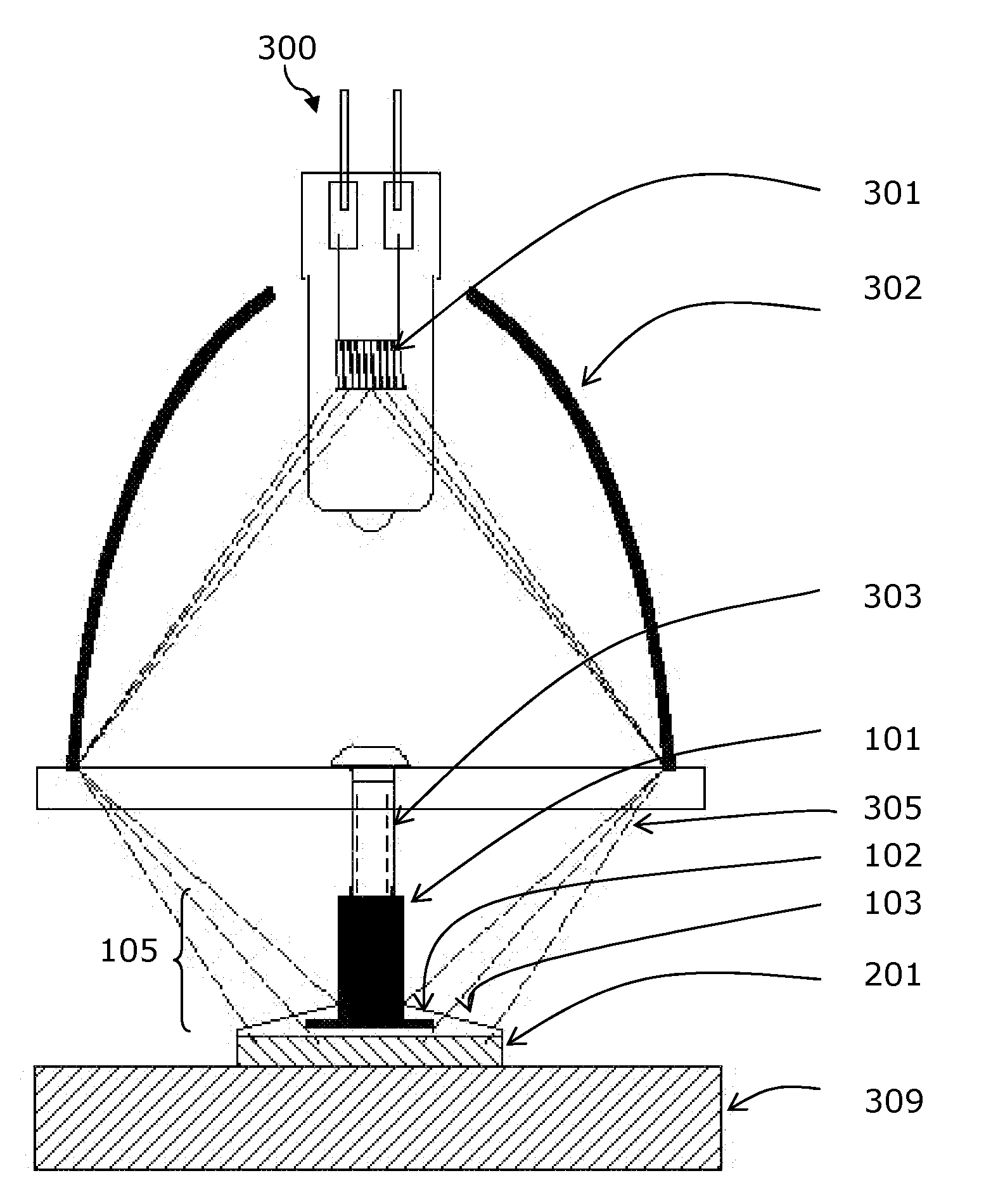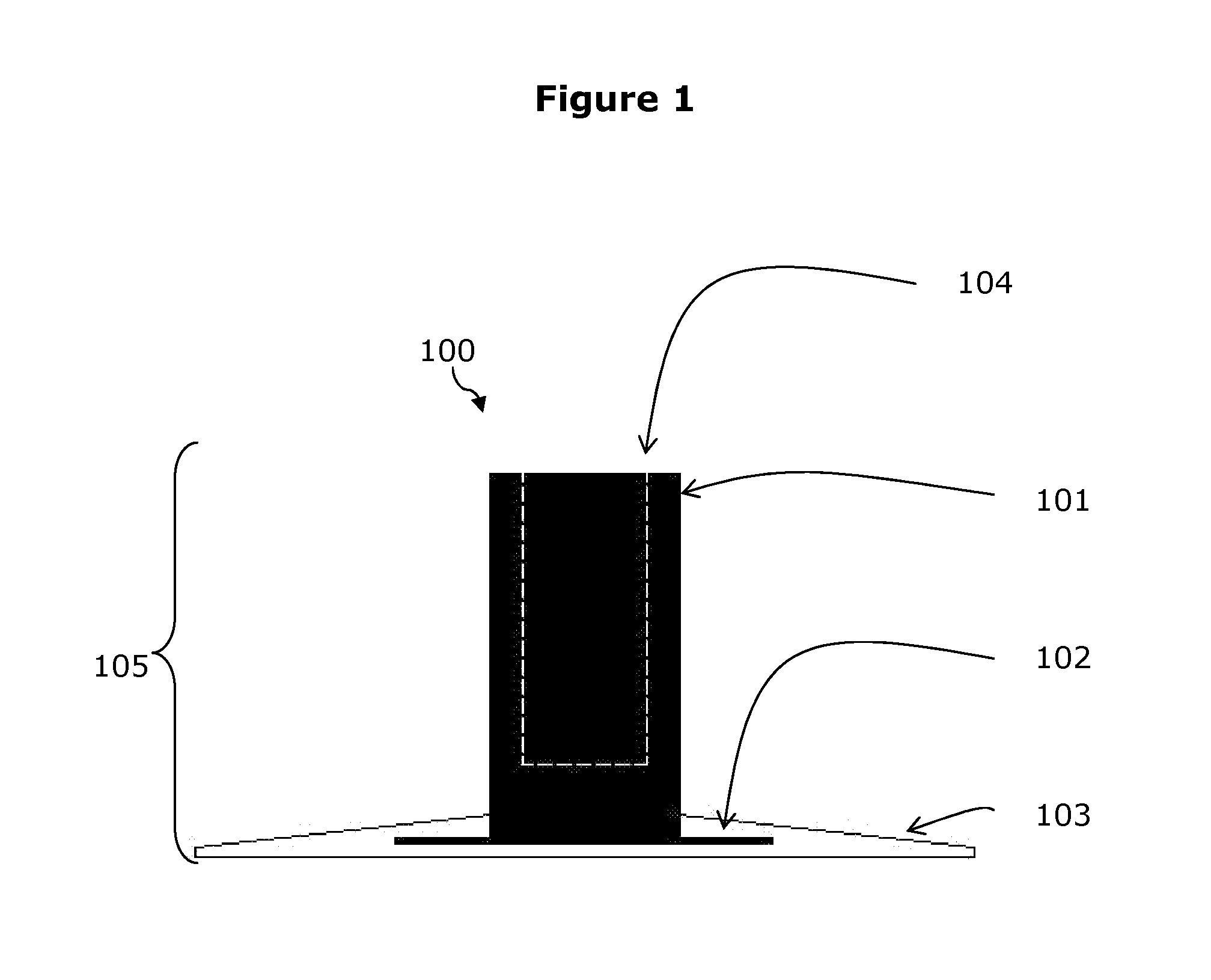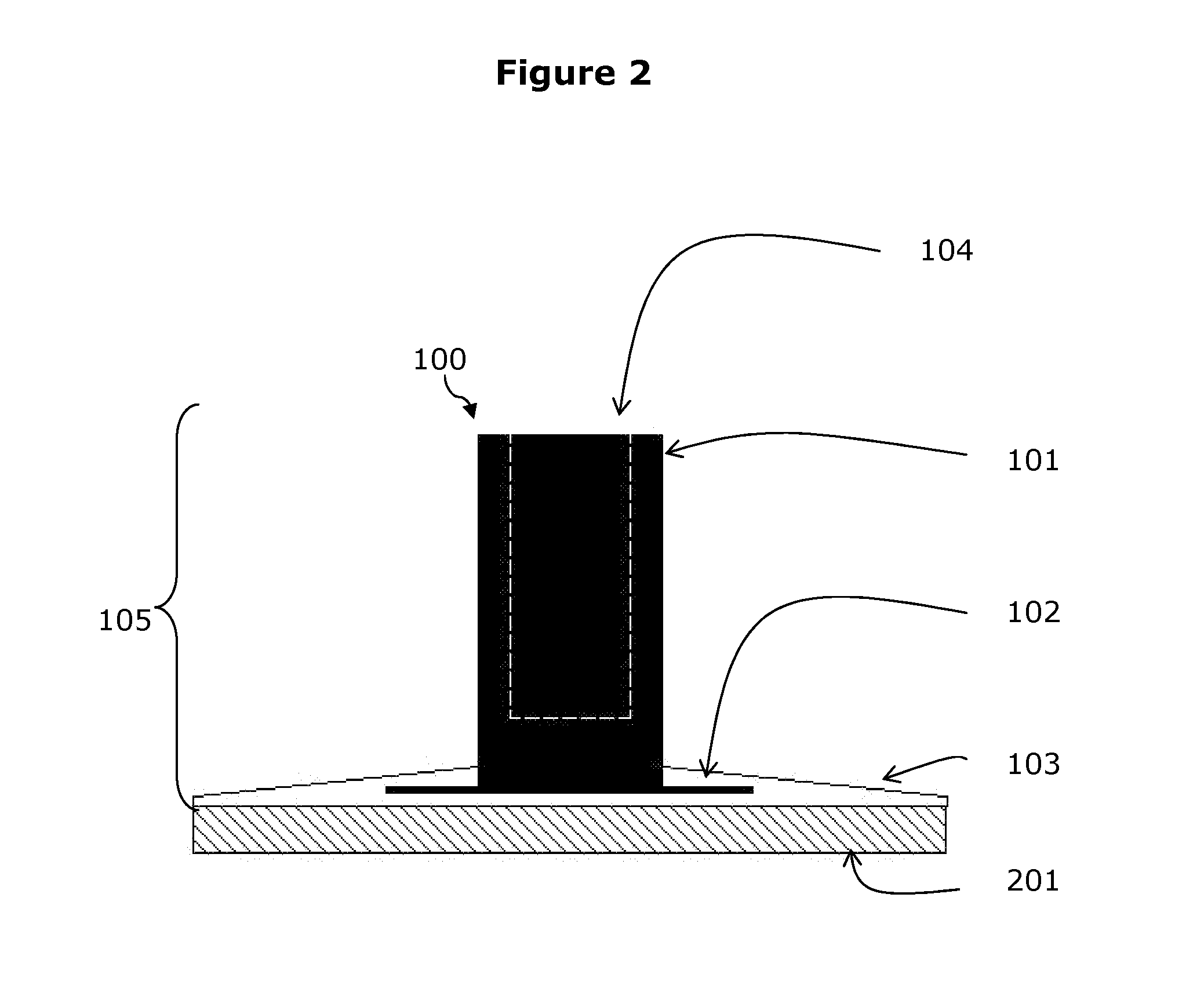Adhesive and process for attaching and detaching articles
- Summary
- Abstract
- Description
- Claims
- Application Information
AI Technical Summary
Benefits of technology
Problems solved by technology
Method used
Image
Examples
example 1
Attachment of Metal Composite Hybrid Part to a Carbon Fiber Epoxy Resin Composite Plate Using a Common Thermoset Adhesive and Bonding Process
[0054]In this example, a metal composite hybrid part having the configuration shown in FIG. 1 and available from Click Bond, Inc. was adhesively bonded onto a carbon fiber epoxy resin composite plate using a thermoset epoxy adhesive. An epoxy adhesive was applied to the flat base of the part following the directions supplied by Click Bond, Inc. The part was placed onto a flat carbon epoxy composite plate.
[0055]A toughened carbon epoxy composite plate was made using Toray Industry aerospace grade T800 prepreg applied as 24 plies in a (0° 45° 90°−45°) repeat configuration. The composite plate was consolidated using the manufacturers curing cycle recommendation in an autoclave. The final plate was cut into 3″×3″ format pieces that were about ⅛″ thick.
[0056]The glass epoxy base of the Click Bond part and the carbon epoxy composite substrate plate w...
example 2
Attachment of a Metal Composite Hybrid Part to a Carbon Fiber Epoxy Resin Plate Using an Exemplary Adhesive and Process of the Present Invention
[0057]In this example, a metal composite hybrid part having the configuration shown in FIG. 1 and available from Click Bond, Inc. was adhesively bonded onto a carbon fiber epoxy resin composite plate using an exemplary adhesive formulation and bonding process of the present invention.
[0058]The adhesive formulation was made by uniformly dispersing about 0.5% by weight of carbon black and about 0.5% by weight of titanium dioxide (by weight of the polymer base) into a thermoplastic polyurethane dispersion, supplied by Sanyo Chemical Industries. About 20% by weight of the polymer base Vectran® TH1670 polyarylate short chopped fiber (0.5 mm) from Kuraray Co., Ltd., was blended uniformly into the dispersion. The adhesive was hand brushed onto the glass fiber-reinforced base of the part and dried in an oven at about 60° C. for about 30 minutes.
[005...
example 3
Attachment of a Metal Composite Hybrid Part to a Carbon Fiber Epoxy Resin Plate Using Another Exemplary Adhesive Formulation and Process of the Invention
[0062]In this example, a metal composite hybrid part having the configuration shown in FIG. 1 and available from Click Bond, Inc. was adhesively bonded onto a carbon fiber epoxy resin composite plate using an adhesive formulation and bonding process described in this invention.
[0063]The adhesive formulation was made by uniformly dispersing about 0.5% by weight of carbon black (by weight of the polymer base) into a thermoplastic polyurethane dispersion, supplied by Sanyo Chemical Industries. No titanium dioxide or other additive was used in the formulation. About 20% by weight of the polymer base Vectran® TH1670 polyarylate short chopped fiber (0.5 mm) from Kuraray Co., Ltd., was blended uniformly into the dispersion. The adhesive was hand brushed onto the glass fiber-reinforced base of the part and dried in an oven at about 60° C. f...
PUM
| Property | Measurement | Unit |
|---|---|---|
| Temperature | aaaaa | aaaaa |
| Length | aaaaa | aaaaa |
| Length | aaaaa | aaaaa |
Abstract
Description
Claims
Application Information
 Login to View More
Login to View More - R&D
- Intellectual Property
- Life Sciences
- Materials
- Tech Scout
- Unparalleled Data Quality
- Higher Quality Content
- 60% Fewer Hallucinations
Browse by: Latest US Patents, China's latest patents, Technical Efficacy Thesaurus, Application Domain, Technology Topic, Popular Technical Reports.
© 2025 PatSnap. All rights reserved.Legal|Privacy policy|Modern Slavery Act Transparency Statement|Sitemap|About US| Contact US: help@patsnap.com



